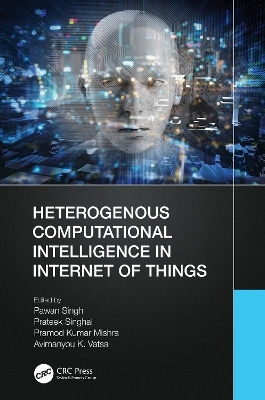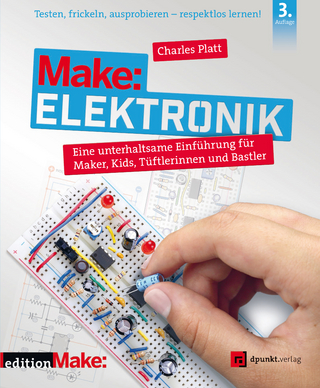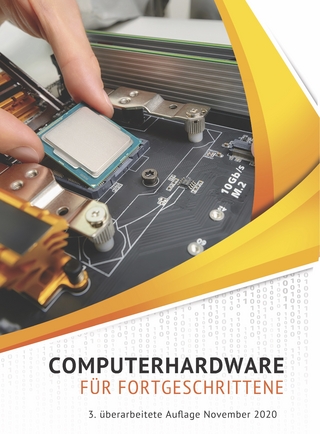
Heterogenous Computational Intelligence in Internet of Things
CRC Press (Verlag)
978-1-032-42637-2 (ISBN)
We have seen a sharp increase in the development of data transfer techniques in the networking industry over the past few years. We can see that the photos are assisting clinicians in detecting infection in patients even in the current COVID-19 pandemic condition. With the aid of ML/AI, medical imaging, such as lung X-rays for COVID-19 infection, is crucial in the early detection of many diseases. We also learned that in the COVID-19 scenario, both wired and wireless networking are improved for data transfer but have network congestion. An intriguing concept that has the ability to reduce spectrum congestion and continuously offer new network services is providing wireless network virtualization. The degree of virtualization and resource sharing varies between the paradigms. Each paradigm has both technical and non-technical issues that need to be handled before wireless virtualization becomes a common technology. For wireless network virtualization to be successful, these issues need careful design and evaluation. Future wireless network architecture must adhere to a number of Quality of Service (QoS) requirements. Virtualization has been extended to wireless networks as well as conventional ones. By enabling multi-tenancy and tailored services with a wider range of carrier frequencies, it improves efficiency and utilization. In the IoT environment, wireless users are heterogeneous, and the network state is dynamic, making network control problems extremely difficult to solve as dimensionality and computational complexity keep rising quickly. Deep Reinforcement Learning (DRL) has been developed by the use of Deep Neural Networks (DNNs) as a potential approach to solve high-dimensional and continuous control issues effectively.
Deep Reinforcement Learning techniques provide great potential in IoT, edge and SDN scenarios and are used in heterogeneous networks for IoT-based management on the QoS required by each Software Defined Network (SDN) service. While DRL has shown great potential to solve emerging problems in complex wireless network virtualization, there are still domain-specific challenges that require further study, including the design of adequate DNN architectures with 5G network optimization issues, resource discovery and allocation, developing intelligent mechanisms that allow the automated and dynamic management of the virtual communications established in the SDNs which is considered as research perspective.
Dr. Pawan Singh is an Associate Professor in the Department of Computer Science & Engineering, Amity School of Engineering and Technology, Amity University Uttar Pradesh, Lucknow, India. He has completed Ph.D. degree in Computer Science from Magadh University, Gaya. He has more than fifteen years of experience in research and teaching. He has published several research articles in SCI/SCIE/Scopus journals and conferences of high repute. He has also authored various books. He has various National and international patents and some are granted. He holds contributions in IEEE, Elsevier, etc. repute journals. He is also a reviewer in various reputed journals. His current areas of interest include Computer Networks, Parallel Processing and Internet of Things. Mr. Prateek Singhal is an Assistant Professor in the Department of Computer Engineering & Applications at GLA University, Mathura, Uttar Pradesh. He is pursuing a Ph.D. degree in Medical Imaging from the Maharishi University of Information Technology, Lucknow, India. He has more than four years of experience in research and teaching. He has published several research articles in SCI/SCIE/Scopus journals and conferences of high repute. He has also authored a book on Cloud Computing. He has various National and international patents and some are granted. He holds contributions to IEEE, Elsevier, etc. reputed journals. He is on the team of the research advisory member in his present institute. His current areas of interest include Image Processing, Medical Imaging, Human Computation Interface, Neuro-Computing, Internet of Things. Dr. Pramod Kumar Mishra is working as a Head and Professor in the Department of Computer Science & Engineering at Banaras Hindu University, Varanasi. He has completed Ph.D. degree on A study of efficient shortest path algorithms for serial and parallel computers from APS University, Rewa, India. He has more than Thirty years of experience in research and teaching. He has received various Awards and fellowships from the good repute organizations. He has also received various grants from national and international government bodies/Agency. He has published several research articles in SCI/SCIE/Scopus journals and conferences of high repute. He has also authored a book on Cloud Computing. He has various National and international patents and some are granted. He holds contributions in IEEE, Elsevier, etc. reputed journal. He is in the team of the research advisory member in his present institute. His current areas of interest include AI and Machine Learning Algorithms, Data Analytics, Parallel Computing, High-Performance Clusters, Algorithm Engineering (AE), High-Performance AE, Parallel Computation, and Computational complexity. Dr. Avimanyou Vatsa is working as an assistant professor in the department of computer science, Fairleigh Dickinson University – Teaneck. He also worked as an assistant professor at West Texas A&M University, a teaching & research assistant at the University of Missouri, Columbia, and an assistant professor for more than ten years in several engineering colleges and a university in India. Also, he worked as a software engineer in the industry. He always motivates and inspires students with a statement: “Nothing is impossible, just put your hard work and sincere effort persistently toward your goal.
1. Human Interacted Computation System – A State of the Art in Music. 2. Heterogeneous Computing of Multi Agent Deep Reinforcement Learning on Edge Devices for Internet of Things. 3. Spectral Analysis of Speech Signal for Psychiatric Health Assessment and Prediction –Optimized using various kernels of Support Vector Classifiers. 4. A Fuzzy based Predictive approach for Soil Classification of Agricultural Land for the efficient cultivation and harvesting. 5. Analysis of Smart Agriculture Systems Using IOT. 6. AI enabled Internet of Medical Things in Healthcare. 7. Time Division Multiplexer Design for Internet of Things (IoT) Networks by using Photonic Hetero-structures. 8. Comparative Evaluation on Various Machine Learning Strategies Based on Identification of DDoS Attacks in IoT Environment. 9. Simulation of Scheduling & Load Balancing Algorithms for Distributed Data Center. 10. Facts Analysis to Handle the COVID-19 Pandemic Situation in an Efficient Way. 11. Experimental and Computational Investigation of Acoustic Erosion in C2H5OH. 12. A Novel Facial Emotion Recognition Technique using Convolution Neural Network. 13. Using machine learning to detect abnormalities on Modbus/TCP networks. 14. Face Recognition System using CNN Architecture & its Model with its detection technique using Machine learning. 15. Network Security Configuration for CampusLAN Using CPT. 16. Advancements in IoT Based Smart Environmental Systems. 17. An Application of Convolutional Neural Networks in Recognition of Handwritten Digit. 18. Use of Artificial Intelligence and GIS Technologies in Healthcare Services. 19. Digital and Smart Agriculture: Components, Challenges, and Limitations.
| Erscheinungsdatum | 28.10.2023 |
|---|---|
| Zusatzinfo | 36 Tables, black and white; 89 Line drawings, black and white; 88 Halftones, black and white; 177 Illustrations, black and white |
| Verlagsort | London |
| Sprache | englisch |
| Maße | 156 x 234 mm |
| Gewicht | 453 g |
| Themenwelt | Mathematik / Informatik ► Informatik ► Netzwerke |
| Mathematik / Informatik ► Informatik ► Theorie / Studium | |
| Informatik ► Weitere Themen ► Hardware | |
| Technik ► Elektrotechnik / Energietechnik | |
| ISBN-10 | 1-032-42637-3 / 1032426373 |
| ISBN-13 | 978-1-032-42637-2 / 9781032426372 |
| Zustand | Neuware |
| Informationen gemäß Produktsicherheitsverordnung (GPSR) | |
| Haben Sie eine Frage zum Produkt? |
aus dem Bereich


